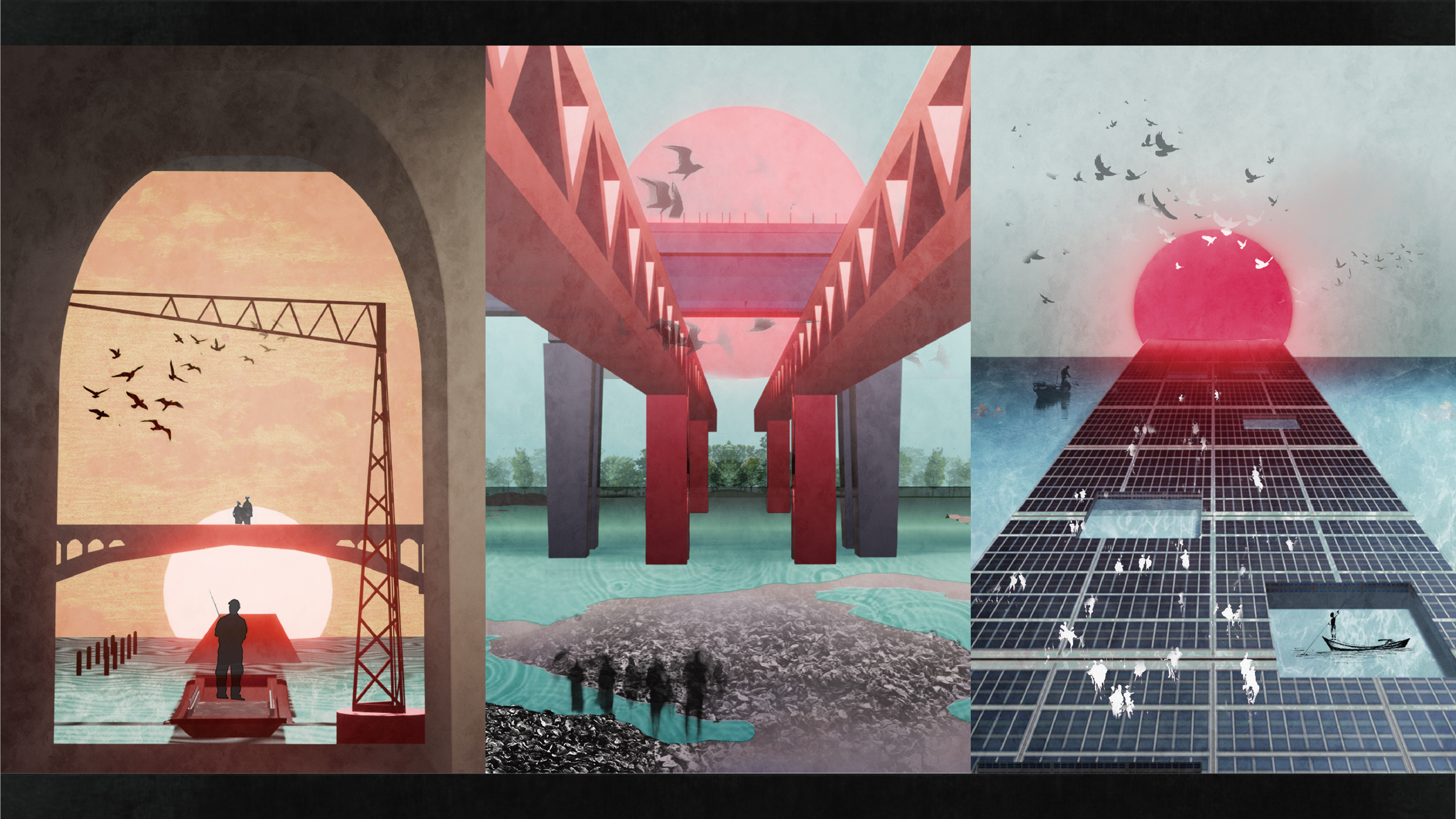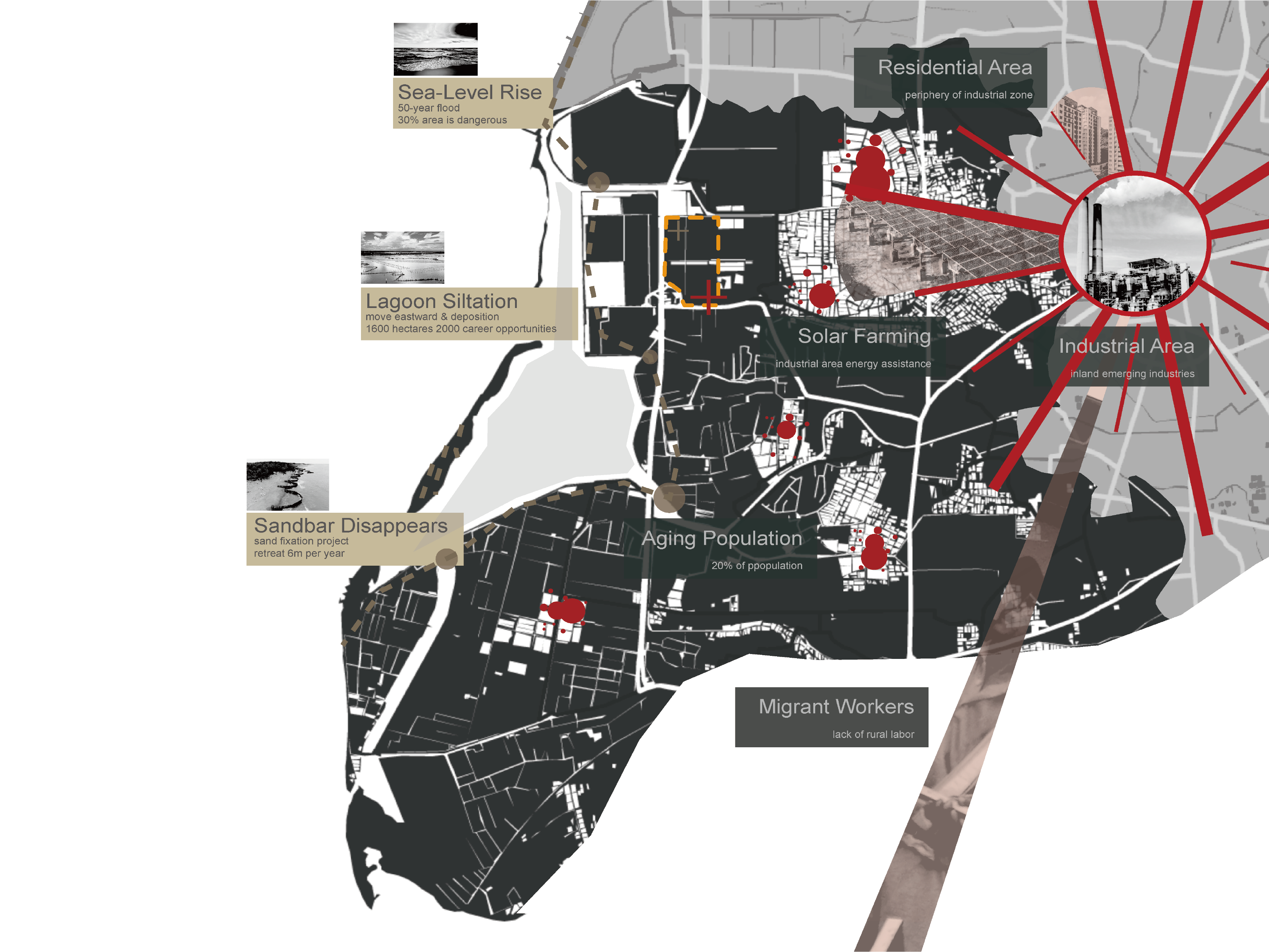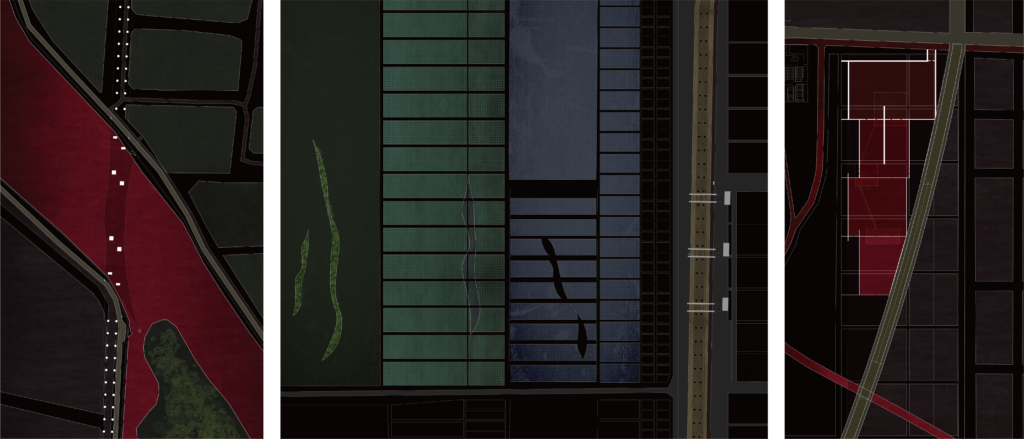失序恐懼
Fear of Disorder
黃旗蕾
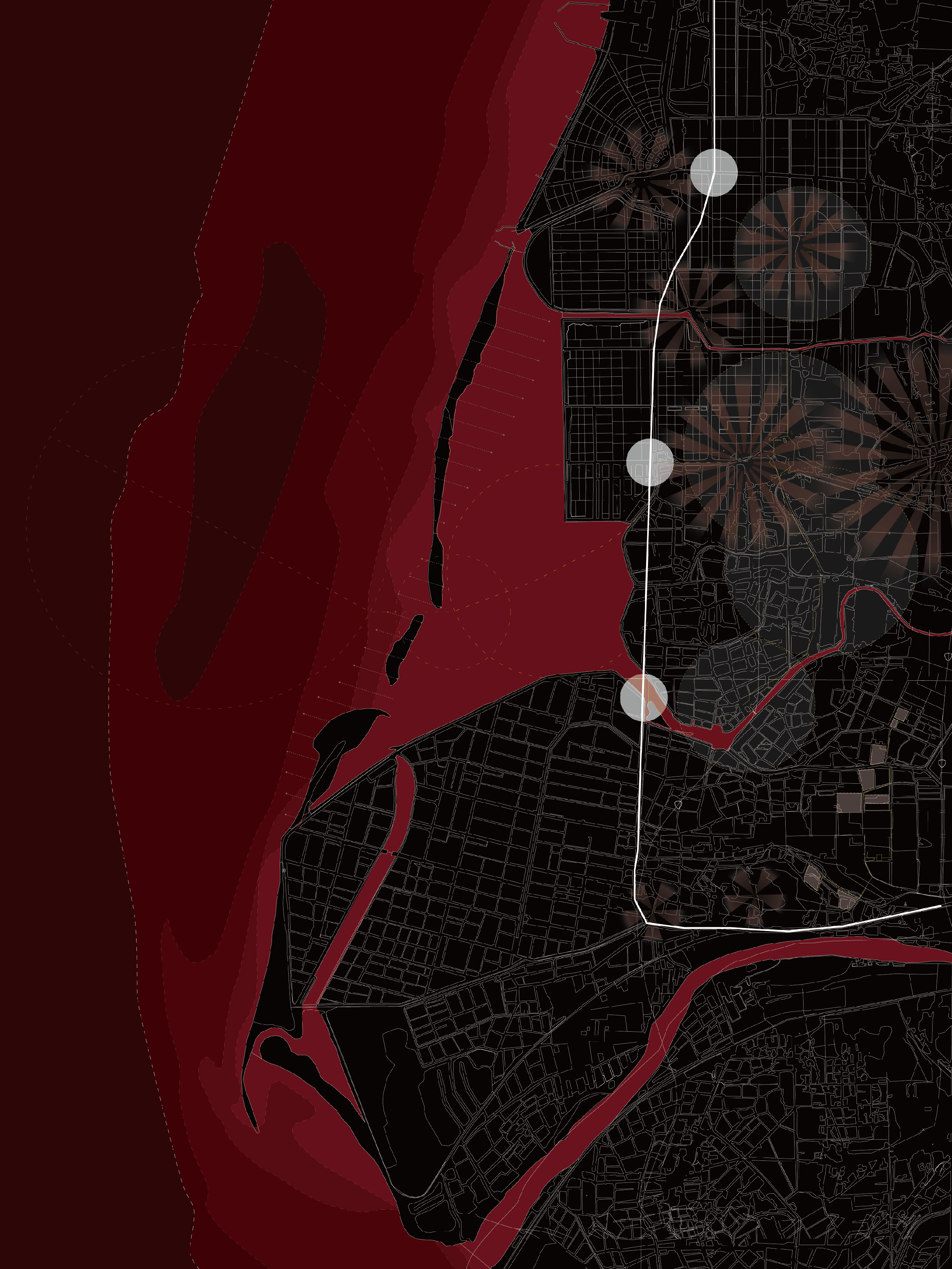
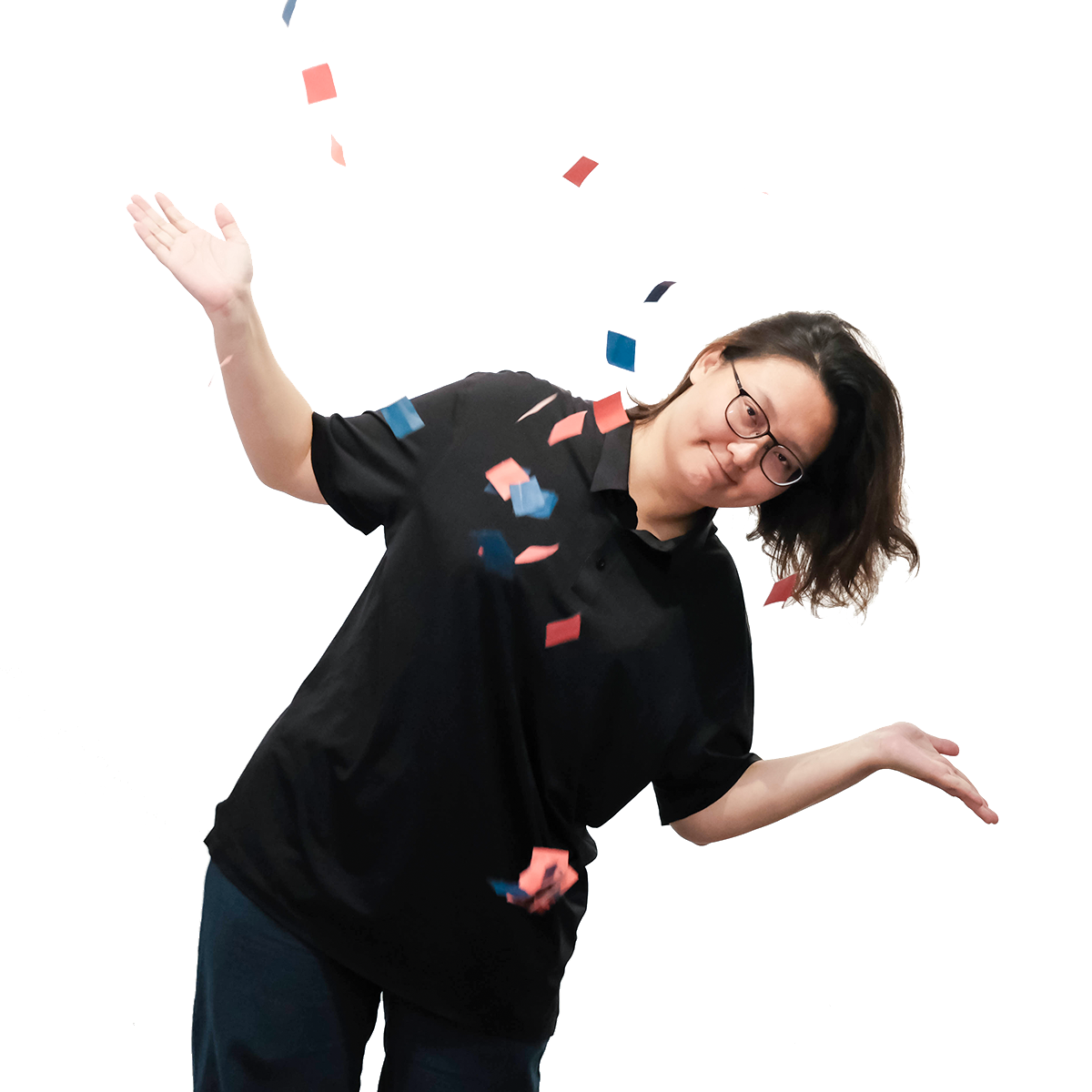
公共建設與決策的神性與人性
設計說明
人與懸殊的尺度關係,形成了無力改變蔓延的恐懼,無論是在地景層次還是公共關係上,面對著蔓延的恐懼,如何以空間形式呈現與化解?
基地
台南市七股區台61線
失序而龐大的公共決策與自然威脅夾擊著七股這塊沿海鄉村,面對著被海水吞沒、被視為能源輔助城市、被人為的荒漠化,居民的恐懼與不安不斷蔓延。因而,省視過往人們是如何面對並轉化恐懼,透過廟宇定著出港的人心,將對未知的恐懼轉為信仰寄託;並將沙洲視為鯤鯓,以神話建立心理的安全區。
因此,於交界嘗試將當代的恐懼,透過公共建設與常民生活重新融合,將台61 線視為重塑的鯤鯓,透過異常與平常的交互塑造,成為人與懸殊的尺度關係的連接和裂解。並藉由一系列剖面的高程重新組織,在地公共關係的可能。
我將建築視為公共與在地的橋樑,除了在實體上嘗試消除人與懸殊的尺度關係,也試圖於溝通上將上下無法理解的恐懼進行消化。
Site
61 Expressway, Qigu District, Tainan City
The coastal village of Qigu is besieged by disorderly public policies and natural threats. The east faces the rising sea, the erosion of sandbars, and the siltation of lagoons, while the west, adjacent to the city, contends with industrial expansion, population shifts, and energy colonization. This creates a battleground where natural and man-made forces converge. The residents’ fear and anxiety continue to spread, buried beneath the beautiful landscape as layers of crises: disjointed public policies, lifeless lands, and fragmented landscapes, all being engulfed by rising waters. The protective sandbar fades, and people are trapped in the lagoon that once sustained them. The vast scale disparity leaves them powerless to change the pervasive fear, both in the landscape and public relations.
Historically, people have confronted and transformed fear by anchoring their spirits through temples, converting unknown fears into faith and creating psychological safety zones. They viewed sandbars as myth, using myths to establish these mental sanctuaries, combating the unknown with the unknown.
In response to contemporary fears, I chose to reorganize known orders and merge them with chaotic fears, shaping the landscape with a mix of heterogeneity and familiarity. Cigu’s identity is rooted in the sea level’s cut: above is the living environment, below is the industrial volume for livelihood. The abrupt elevation of Route 61 and the peculiar photovoltaic installations create heterogeneous breakthroughs. I envision Route 61 as a new artificial Kunshen, a guardian of the landscape and its residents. From the elevated sea bridge to the northward-hidden Kunshen body, I selected three points to blend public and local elements, creating a paradox of unfamiliarity and acceptance. Through sectional elevation dissections, I aim to digest fear and create new possibilities from the abnormal.
This design addresses not only the representation and attempt to eliminate fear but also serves as an experiment in the process of adapting to climate change. We face similar dilemmas regarding potential future disasters, knowing the crises that may come. However, due to the slow and immense nature of these changes, residents often cannot effectively understand or perceive them. Thus, by interacting between the abnormal and the normal, architectural design becomes a tool to imagine the future. This involves pushing certain critical conditions to extremes—such as social structure, economy, and disasters—and reintegrating public infrastructure and decision-making into the local context. By viewing architecture as a bridge between the public and the local, the design attempts to physically eliminate the disparity in scale between people and their environment and also seeks to digest the fears that are hard to comprehend from top to bottom.
